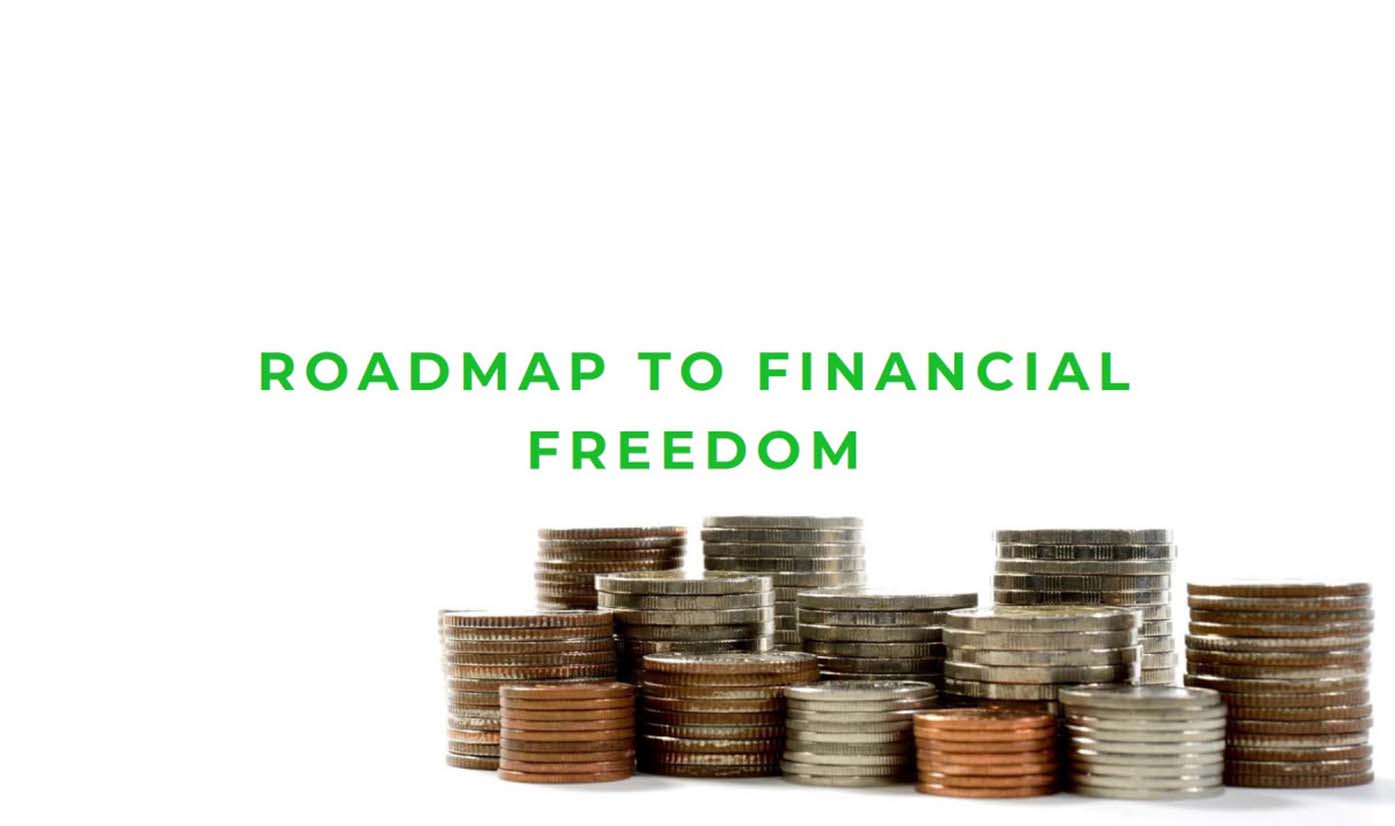Reaching financial independence by the age of 40 is a dream that many people have but only a select few manage to achieve. It sounds like an ambitious goal, but with careful planning, disciplined investing, and a clear strategy, it’s entirely possible. We will explore the steps that will help you attain financial independence early, along with investment strategies and practical tips on how to get there.
What is Financial Independence?
Before diving into the steps, it’s important to define what financial independence (FI) means. Financial independence is when you have enough savings, investments, and passive income to cover your living expenses without needing to rely on a regular paycheck. In other words, it’s the point at which you no longer need to work to support your lifestyle.
For many, the idea of achieving financial independence by the age of 40 seems like a distant dream, but with the right mindset and strategies, it can be done. In fact, the FIRE movement (Financial Independence, Retire Early) has gained significant traction in recent years, with many early retirees using a combination of extreme savings and smart investments to leave the workforce well before the traditional retirement age of 65.
The Roadmap to Achieving Financial Independence
Achieving financial independence by 40 requires a combination of cutting-edge investment strategies, aggressive savings, and lifestyle changes. Let’s break down the steps involved:
1. Set Clear Financial Goals
The first step to achieving financial independence is setting clear and actionable goals. Financial independence doesn’t happen by chance; it requires planning. Ask yourself some important questions to understand your financial picture:
- What are my current living expenses?
- What do I want my lifestyle to look like when I reach financial independence?
- How much passive income will I need each month to cover those expenses?
- What is my current net worth, and how much do I need to save to reach financial independence by 40?
Once you’ve answered these questions, you’ll be able to set a specific financial target and timeline. Breaking down your goal into smaller milestones will help you stay on track. If you want to retire early at 40, consider how much you need to save each year to reach that goal.
2. Track Your Spending and Cut Unnecessary Expenses
Financial independence requires saving a significant portion of your income. One of the quickest ways to reach that target is by cutting unnecessary expenses. This doesn’t mean you have to live like a hermit, but it does require conscious decisions about your spending. Here’s how to start:
- Audit your spending: Track every single expense for at least a few months. Many people are surprised by how much they’re spending on things they don’t really need.
- Create a budget: Once you know where your money is going, create a budget that prioritizes savings and investments.
- Cut back on luxury items: Consider cutting back on dining out, subscription services, or expensive hobbies that aren’t essential to your happiness.
By slashing unnecessary expenses, you can increase your savings rate. A common target among those pursuing financial independence is saving 50% or more of their income. While it sounds difficult at first, it’s entirely possible with lifestyle changes and smart financial decisions.
3. Maximize Your Income Streams
To accelerate your path to financial independence, you’ll need to maximize your income. This could mean pursuing higher-paying jobs, side gigs, or developing multiple streams of income. Here’s how to do it:
- Invest in your skills: Continuously upgrade your skills, whether through formal education, online courses, or gaining experience in high-paying fields.
- Start a side hustle: In addition to your main job, consider creating a side business. This can be anything from freelance work, blogging, online courses, or selling products.
- Passive income: Look for ways to earn passive income. Real estate investing, dividends from stocks, or creating content that generates revenue can provide steady streams of income without much effort on your part.
Diversifying your income streams ensures you’re not solely dependent on your primary job. Even if one source of income slows down or stops, you’ll have other revenue channels to fall back on.

4. Invest Smartly: Focus on Compound Growth
While saving is important, investing is where the magic happens. The goal is to let your money work for you. One of the most powerful tools in building wealth is the power of compound growth, which allows your investments to grow exponentially over time.
Here are some key investment strategies to help you on your journey to financial independence:
- Stock Market Investments: The stock market offers an excellent way to grow your wealth over time. Consider investing in low-cost index funds and exchange-traded funds (ETFs), which track the overall market and provide diversification.
- Recommendation: Look into funds like the Vanguard Total Stock Market ETF (VTI) or Fidelity 500 Index Fund (FXAIX), which give exposure to a broad range of companies and have low management fees.
- Real Estate: Real estate can provide consistent passive income through rental properties. Look for properties in growing areas where you can generate a positive cash flow.
- Recommendation: Consider investing in rental properties or Real Estate Investment Trusts (REITs), which allow you to invest in real estate without buying physical properties.
- Dividend Stocks: Investing in dividend-paying stocks can provide you with a steady income stream. Companies like Johnson & Johnson (JNJ), Coca-Cola (KO), and Procter & Gamble (PG) are known for their reliable dividend payouts.
- Retirement Accounts: Make sure you are taking advantage of tax-advantaged accounts like a 401(k) or IRA. Contributing to these accounts can help you grow your wealth while minimizing taxes.
Pro Tip: The earlier you start investing, the more time your investments have to grow through compounding. Consider investing aggressively in the first few years to maximize long-term growth, and then reduce risk as you approach your goal.
5. Use Tax-Advantaged Accounts
In order to accelerate your path to financial independence, it’s essential to leverage tax-advantaged accounts. These accounts allow your money to grow without being taxed until you withdraw it. This gives your investments a larger compounding effect over time.
- 401(k): Many employers offer a 401(k) with matching contributions, which is essentially “free money.” Contribute as much as possible, especially if your employer offers a match.
- Roth IRA: A Roth IRA allows you to withdraw your investment gains tax-free in retirement. The maximum contribution for 2021 is $6,000 per year ($7,000 if you’re over 50).
- Health Savings Account (HSA): An HSA is another tax-advantaged account that can be used for medical expenses. It also has investment options, which makes it an excellent tool for building wealth for healthcare expenses.
6. Minimize Debt
Debt is one of the biggest barriers to achieving financial independence. Pay off high-interest debts like credit cards as quickly as possible. Then, work on paying off other debts like student loans or car loans. The less debt you have, the more you can direct toward saving and investing.
- Debt Avalanche: Pay off your debts with the highest interest rates first.
- Debt Snowball: Pay off the smallest debts first to build momentum.
Having no debt (or minimal debt) is crucial when trying to achieve financial independence early. Every dollar you spend paying off debt is a dollar that could be invested toward your future.
7. Live Below Your Means
Living below your means is perhaps the most important habit you need to adopt when pursuing financial independence. It’s not just about saving money, it’s about creating a mindset where you prioritize long-term financial goals over short-term pleasures.

Focus on delayed gratification. Instead of spending money on immediate luxuries, save and invest it to grow your wealth. You don’t have to completely give up the things you enjoy, but it’s important to be mindful of how you’re spending your money.
Achieving financial independence by age 40 is not an easy task, but it’s certainly attainable if you approach it strategically. Start by setting clear goals, tracking your spending, and aggressively saving and investing. Maximize your income through side hustles, invest smartly in assets that provide long-term growth, and minimize debt. Use tax-advantaged accounts to boost your investment potential and always strive to live below your means.
Remember, the key to financial independence is not just about earning more money but also about making smart decisions with the money you have. Keep your eye on the prize, stay disciplined, and you’ll be well on your way to reaching your goal of financial independence by age 40.
